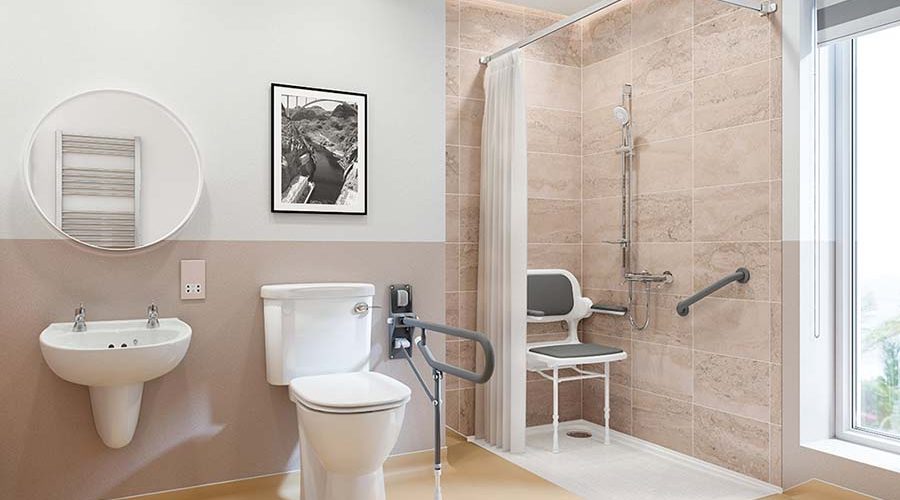Over half (54%) of households in the social rented sector have one or more household members with a long-term illness or disability. With such a high level of need, how can the bathroom be made an even safer space, cost-effectively? Here Stuart Reynolds, Head of Product and Marketing at AKW, a leading UK provider of accessibility solutions, discusses how going back to basics and looking at adaptations, such as safety flooring and bidets, can have a significant impact.
AKW Ltd.
One way that those with long-term illnesses or disabilities can be made safer is to make sure that high-risk areas, such as the bathroom, are as easy to access as possible. As well as good lighting and conveniently positioned grab-rails, an area that is often overlooked is the flooring.
Does the flooring meet anti-slip standards? Accessible bathroom flooring should conform to both HSE and International standards and have high barefoot and footwear slip-resistance. If possible, choose flooring, such as AKW’s anti-slip vinyl safety flooring, which has a PTV (Pendulum Test Value) that exceeds wetroom requirement standards, providing complete peace of mind for end-users and social landlords alike.
Is the flooring patterned or highly contrasting in colour? A person with dementia can be confused by flooring speckles or texture and assume it is pieces of dirt that need to be picked up. Also, a change in flooring colour from the bathroom to a shower tray or hallway can mistakenly be assumed to be a step. To avoid this, ensure that the bathroom is finished using a uniform safety flooring in a single colourway.
Promoting toileting independence
An area that can be particularly challenging for some to access without help is toileting. Making toileting as straightforward as possible is vital. Bidets can offer a solution to this, as they don’t require the same complex levels of dexterity or physical ability that are otherwise needed. Many will remember the avocado-coloured bidet of the 1970s, however, bidets have come a long way since then and an over-toilet seat attachment version can be a cost-effective addition, helping to promote dignity and keeping individuals independent for longer.
Versatile bidets
An over-toilet seat attachment, such as AKW’s bidet unit is typically much cheaper than buying and installing a two-in-one bidet/toilet. The cost and installation of such models can be under £1000, which means they are classed as minor works and eligible for a local authority Minor Works Grant. The solution is also transferable. So, if there’s a change of residents or the current occupier no longer needs the use of a bidet, it can be removed and used elsewhere. The seat-like attachment overcomes the challenges of fitting an additional bidet into a small bathroom. As every resident is unique, advice should be sought from an occupational therapist or appropriate healthcare professional to ensure the chosen bidet will meet the resident’s ongoing needs.
Going back to basics by looking at flooring and toileting adaptations, social housing providers can help deliver safer bathroom spaces for many years to come.








